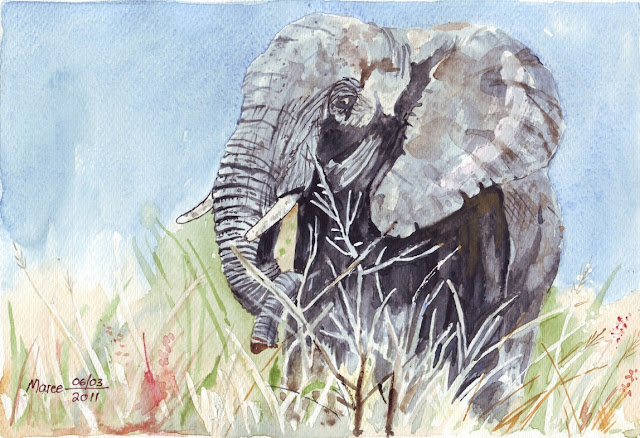“An ostrich with its head in the sand is just as blind to opportunity as to disaster.”
W&N Watercolours on Bockingford 300gsm 8" x 12" - unframed
The Ostrich (struthio camelus) is a member of a group of birds known as ratites, that is they are flightless birds without a keel to their breastbone, and are native to Africa. Of the 8,600 bird species which exist today, the ostrich is the largest. Standing tall on long, bare legs, the Ostrich has a long, curving, predominantly white neck. The humped body of the male is covered in black patches and the wings and tail are tipped with white. The female is brown and white. These huge birds, which sometimes reach a height of 2.6 m and a weight of 135 kg, cannot fly, but are very fast runners.
Ostriches were almost wiped out in the 18th century due to hunting for feathers. By the middle of the 19th century, due to the extensive practice of ostrich farming, the ostrich population increased. The movement changed to domesticating and plucking ostriches, instead of hunting. Ostriches have been succesfully domesticated and are now farmed throughout the world, particularly in South Africa, for meat, feathers and leather. The leather goes through a tanning process and is then manufactured into fashion accessories such as boots and bags.
ITEM ID : StruthioCamelusOstrich
PRICE - R350.00 including postage in South Africa







